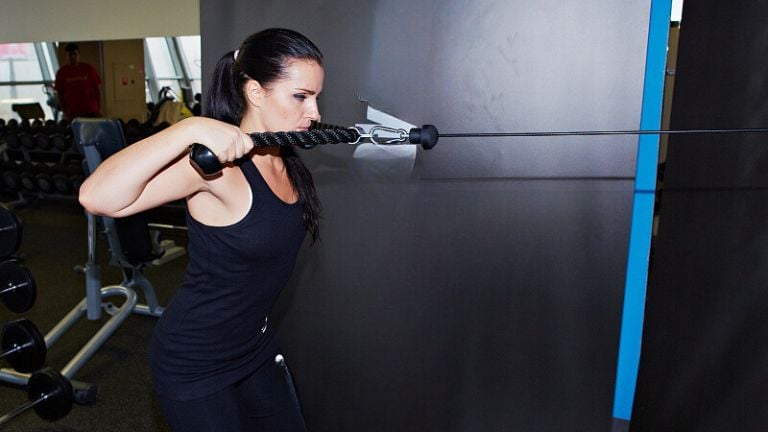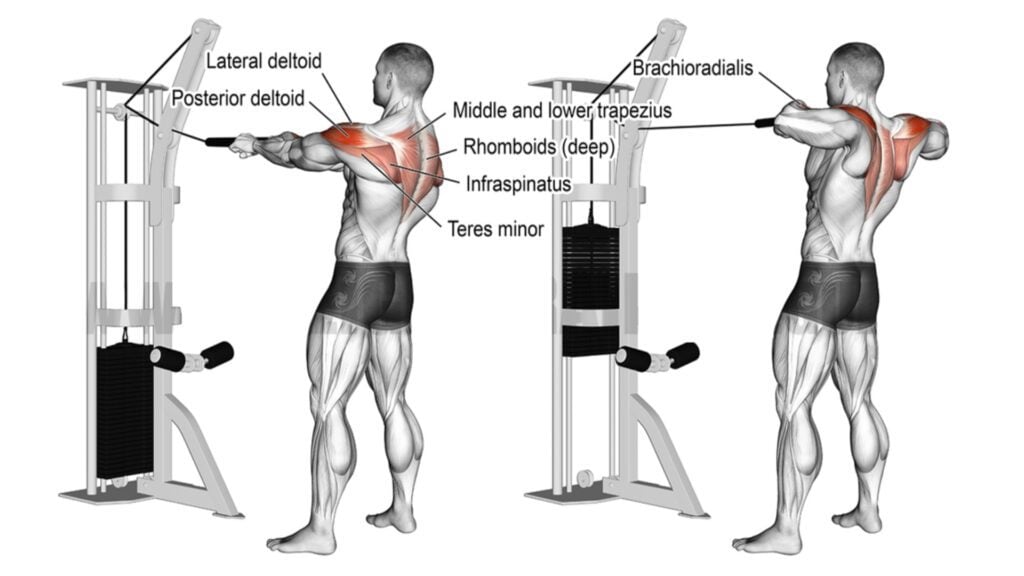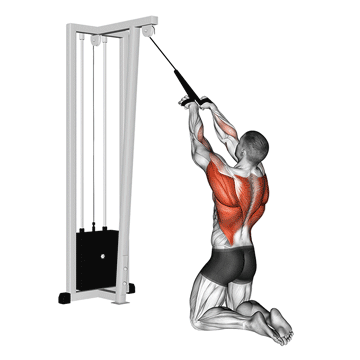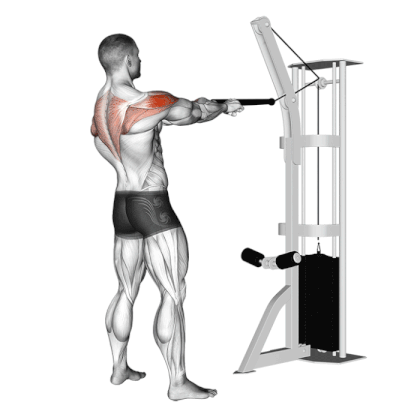The cable rear delt pull is a very effective and functional exercise for building muscle and strength in the rear deltoids.
This movement also hits the traps, rhomboids and rotator cuff muscles, such as the infraspinatus. This helps build stability and strength in the shoulder blades and makes them more injury-resistant.
It is usually performed for moderate to high reps, at least 8–12 reps per set, as part of an upper-body or shoulder-focused workout.
What makes the cable rear delt pull so special? Unlike free weights, cables keep constant tension on your muscles; from start to finish, you will feel your rear delt.
Another thing I love about this exercise is the customization. You can easily adjust the height of the cable to target slightly different areas of your rear delts. Play around with it and see what feels best for you.

Cable Rear Delt Pull Muscles Worked
The Cable Rear Delt pull primarily targets the posterior deltoid (or rear deltoid), and also engages several other muscles to assist with the movement and stabilize the body.
- Primary Muscles: Rear deltoids
- Secondary Muscles: Trapezius, Rhomboids
- Stabilizing Muscles: Rotator cuff muscles, Infraspinatus and Teres Minor, Biceps Brachii, and core muscles (Rectus Abdominis and Obliques)

How To Do Rear Delt Cable Pull
- Attach a double-grip rope to a cable pulley about mid-chest level.
- Grasp one end of the rope in each hand and step backward until the rope is pulled taut and your arms and shoulders are stretched forward.
- Keep your lower back upright and slide your hips back so that your knees are slightly bent.
- Keep your elbow slightly bent and pull that cable out to your side. Imagine you’re trying to touch your elbow to the wall behind you. Feel that burn in your rear delt? That’s what we’re after!
- Slowly bring your arms back to the starting position. That’s one rep. I usually aim for about 10-12 reps per set, but you do what feels right.
- Slowly return the rope to the starting position.
- Complete your reps, focusing on quality over quantity
Tips and Form
- Keep your wrist neutral (straight). Avoid flexing or extending it, which can reduce force transfer to the target muscle.
- Keep your back straight and chest up. A neutral spine ensures optimal muscle engagement and reduces the risk of lower back strain.
- Don’t lean backwards to pull the weight towards you.
- Make sure your shoulder blades stay tight and tense throughout the movement.
- Focus on the mind-muscle connection to pull down by using your back muscles.
- Pull the rope outward during the positive portion of the rep, so your elbows are flared out, which will really stimulate the rear deltoids.
Rear Delt Cable Pull Variations
This exercise can be done in a few different ways to make it more accessible or to target your muscles in new ways.
You can use a high cable or even a medium cable, provided you adjust the angle of your body so that your elbows and the angle of the cable are perpendicular to your torso.
1. Kneeling Rear Delt Rope Pull
Kneeling Rear Delt Rope Pull is a tremendous exercise that effectively works many muscles, including the shoulder, back, wing, and trapezius muscles.
The kneeling position provides a stable base, reducing the chance of using your body momentum. This stability makes it easier to isolate the rear deltoids because it minimizes lower back and core involvement.

2. Face Pull
The Face Pull is a highly effective cable machine exercise that primarily targets the rear deltoids, while also engaging the biceps, triceps, and traps to a lesser extent.
This exercise prevents muscular imbalance and builds overall shoulder strength.
It’s important not to confuse the Face Pull with the Standing Cable Rear Delt Pull. During the Face Pull, your elbows should stay high, and the rope should be pulled to eye level rather than shoulder level.


Manish is a NASM-certified fitness and nutrition coach with over 10 years of experience in weight lifting and fat loss fitness coaching. He specializes in gym-based training and has a lot of knowledge about exercise, lifting technique, biomechanics, and more.
Through “Fit Life Regime,” he generously shares the insights he’s gained over a decade in the field. His goal is to equip others with the knowledge to start their own fitness journey.
